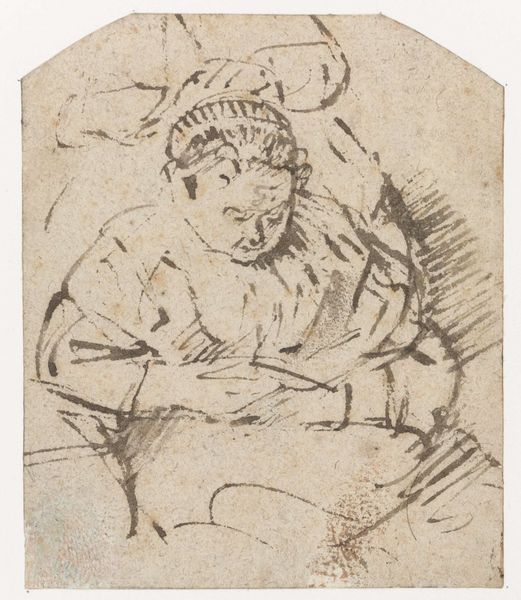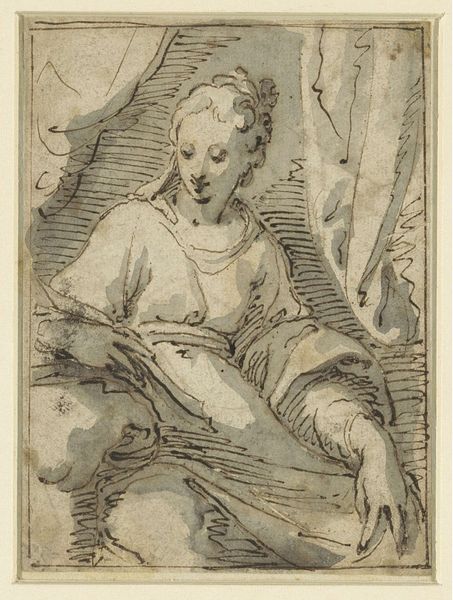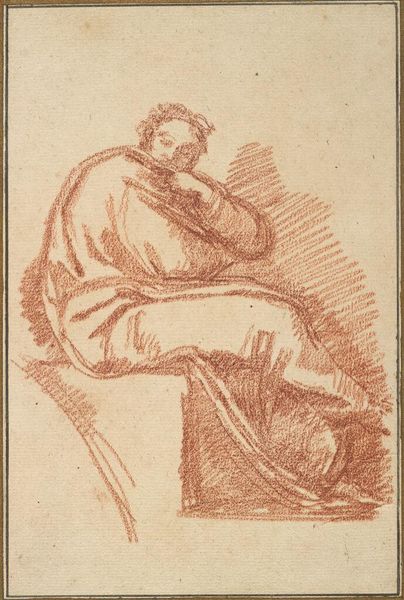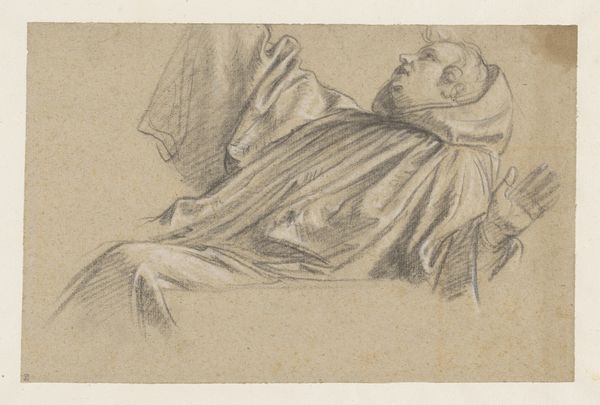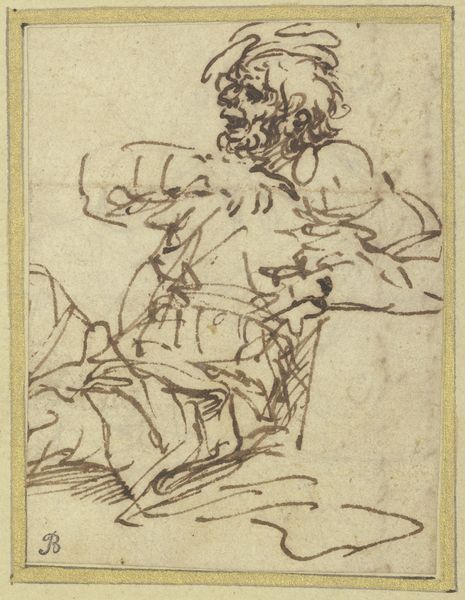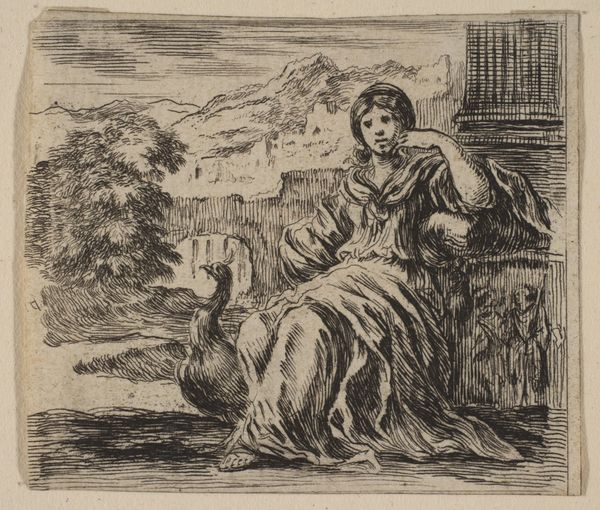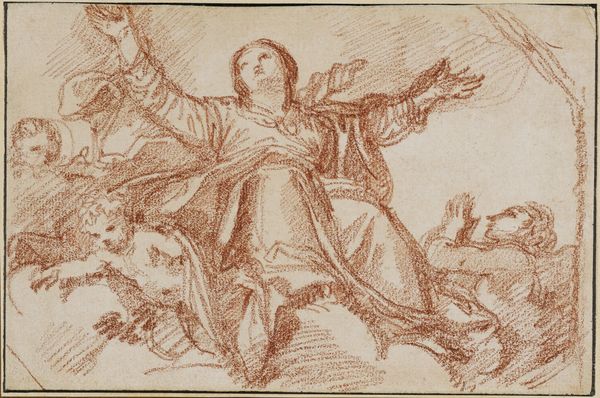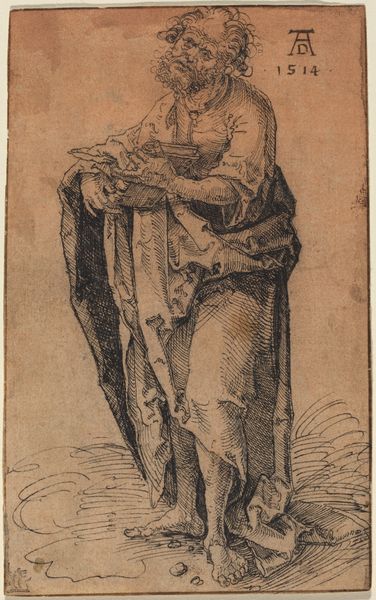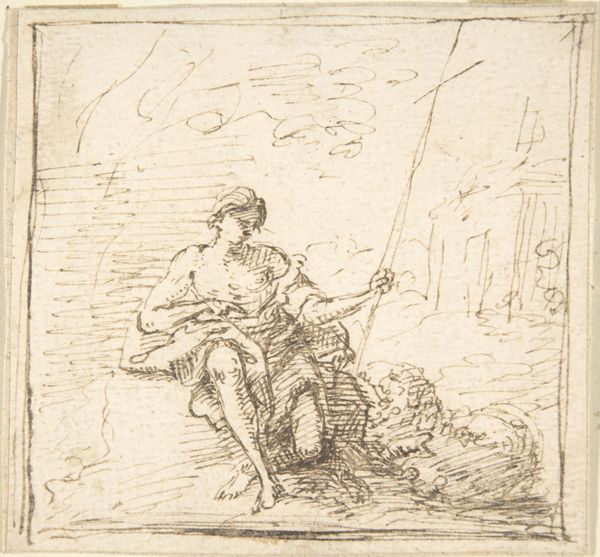
drawing, paper, ink
#
portrait
#
drawing
#
baroque
#
paper
#
ink
#
genre-painting
Dimensions: height 57 mm, width 57 mm
Copyright: Rijks Museum: Open Domain
Editor: So here we have Cornelis Schut's "Slapende man met hoed," made sometime between 1618 and 1655. It's an ink drawing on paper, giving it this very immediate, almost rough quality. I'm curious – what jumps out at you when you look at this piece? Curator: Immediately, the stark materiality of the ink and paper draws my attention. Think about the artist's labor. Schut chose to depict this figure – likely of a lower social class – with these specific, readily available materials. Was he critiquing the lavish portraiture typically reserved for the wealthy, highlighting the economic disparities of the era? Editor: That's a really interesting point. I hadn't considered the choice of materials as a commentary itself. Do you think there’s something specific about using ink – a relatively inexpensive medium – to portray someone who might have been experiencing poverty? Curator: Precisely! Ink, a humble substance, makes visible the means of production, whereas painting often obscures its origins. Consider the availability of paper at the time; was it a commentary on disposable labor or commentary on class division by not using costly paints? Schut seems interested in presenting labor and materiality head-on. Editor: I see. So it's less about the image of a sleeping man, and more about how the drawing itself is made, what it's made from, and what that says about its social context. Curator: Exactly! We must always ask ourselves, who had access to what materials, and whose stories were considered worthy of representation in expensive or cheap form. It forces us to confront issues of labor, value, and the politics inherent in artmaking itself. Editor: This has given me a whole new perspective on this seemingly simple drawing. It’s amazing how much history and social commentary can be embedded in the materials and techniques an artist chooses. Curator: Indeed. By considering the materiality and the production processes, we unlock deeper layers of meaning and challenge the traditional boundaries between art and life.
Comments
No comments
Be the first to comment and join the conversation on the ultimate creative platform.

